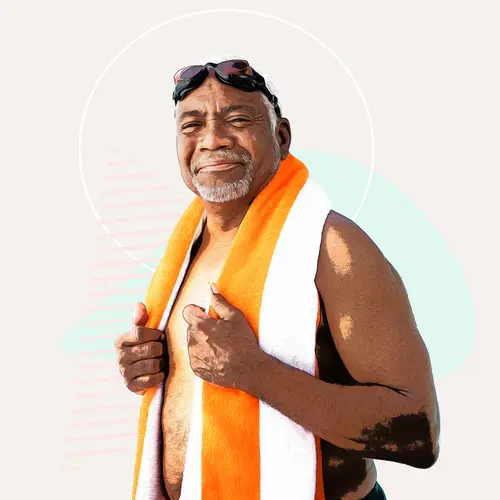For most people, walking is so easy that they do it without thinking. But with every step, your brain and body are pulling off a series of complex movements. Legs move and bend, arms swing, the body balances as one foot comes down and the other goes up.
After you have a stroke, you may realize exactly how complex something like walking is. Moving your body can be harder than it was.
But as you recover, there are lots of ways you can improve how well you get around. Learn ways to regain strength and balance and help your mind and body get back in sync.
How Can a Stroke Affect Movement?
Some people who’ve had a stroke will have some trouble with walking and getting around. Strokes can damage parts of your brain that coordinate your movements. Brain signals get scrambled, and your mind and muscles may not work together very well. Specific issues include:
- Weakness. Many people have weak muscles after a stroke. It might be in a small area or one side of your whole body. You may not be able to move some muscles at all.
- Spasticity. This is when muscles stay tight and are hard to stretch. Your fist might always be clenched, or an arm always pressed against your chest.
- Foot drop. This can happen if the muscles in your feet are weak or you can’t move them. When you walk, you can’t lift your foot normally as you step. Instead, it hangs down and your toes drag on the ground, which can make you trip.
A stroke can affect how well you get around in other ways:
- Changes in feeling. You might lose feeling or get pins and needles in your legs or feet. Parts of your body may also become very sensitive and painful.
- Tiredness. You may get worn out easily. Basic activities may now take a lot of energy and concentration.
- Coordination problems. Damage to your brain from a stroke can affect how your body controls movement, a problem called ataxia. You may feel awkward or clumsy.
- Balance problems. You might feel dizzy or unsteady on your feet.
After a stroke, your health care team will start helping you regain any abilities you lost right away. They have lots of tools that can help you work around movement problems.
Work With the Experts
Rehabilitation nurses, physical therapists, and occupational therapists will be key in your recovery. They’ll come up with a specific plan to help you. You may need to start relearning basic tasks, like getting out of a chair or into bed safely.
A physical therapist will also show you exercises you can use to rebuild strength and balance and ease pain. You’ll need to practice them a lot.
Use the Right Tools
Of course, canes, walkers, and wheelchairs can be important, depending on your situation. Other devices can help, too. For example, special braces -- like an ankle-foot orthosis (AFO) -- can support your feet and ankles and prevent foot drop. Ask your health care team about tools that will help you get around.
Make Sure You’re Safe to Drive
There are no set rules about whether you can drive after a stroke -- it depends on your case. One problem is that right now, you may not be the best judge of whether you’re safe on the road. Here’s what you can do:
- Talk to your doctor. Get their opinion on whether it’s safe for you to get behind the wheel.
- Get a driving checkup. Take a test with a professional, who will check your vision, reaction time, and more. Talk to a local rehab center or the department of motor vehicles in your state to see where you can get an evaluation.
- Sign up for a training program. The instructor can check your abilities and give you tips on how to make changes to your car, so it’s easier to drive. Ask your rehab team about the programs that are available in your area.
What to Expect
After a stroke, you’ll probably see the biggest improvements in your movements and balance in the first 6 months. After that, they may keep getting better, but more slowly.
Recovery can be frustrating. After all, getting around on your own probably feels important to your sense of independence.
Try not to be hard on yourself. You may not be able to do everything you used to do, or at least not in the same way. But the best bet is to give yourself time, work closely with your rehab team, and work hard on recovery. The more you move, the stronger you’ll get. It can even lower your chances of having another stroke.

